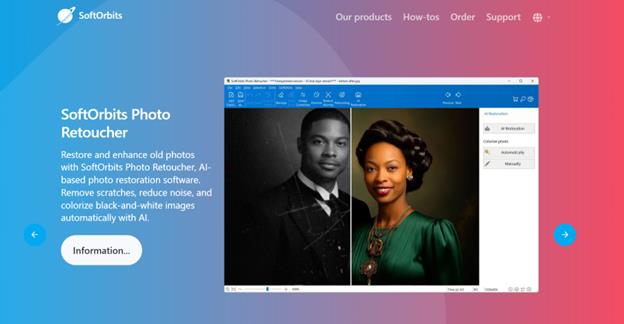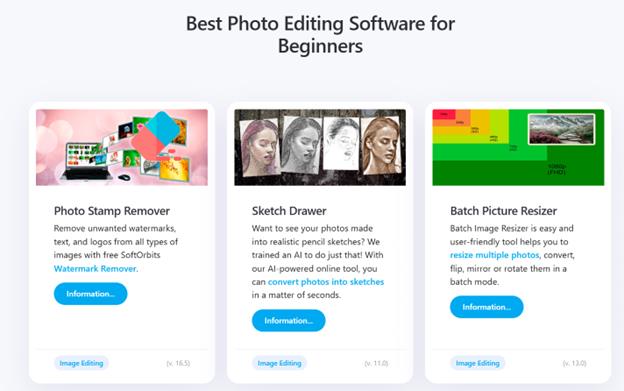SoftOrbits’ introduction of AI features in 10 of its most prominent utilities has reduced editing time by around 40%, according to the company’s internal data.
At the same time, both the user base and software downloads have grown by around 20%.
Here’s how a company working in a highly competitive industry managed to achieve these figures by carving its own niche and appealing to its audiences in an entirely new way.
What is SoftOrbits?
Established in 2006 as a software provider in the image editing niche, SoftOrbits quickly gained traction by focusing on hyper-focused utilities that provided simple automated solutions to everyday problems.
The team started by developing tools for batch processing and stamp removal, but quickly moved on to developing its own editing software, now powered by AI.
Today, SoftOrbits is a well-known brand boasting over a million downloads every year as well as a user base of 300,000 people.
The AI problem
Unlike most companies in the niche, SoftOrbits deliberately avoids generative AI solutions, focusing on helping users speed up the most time-consuming and technically difficult processes instead. This way the team manages to win over its audience of both professional photographers who are opposed to AI solutions and non-experts looking to quickly fix their photographs.


“AI is currently a hotly debated topic, especially when it comes to its artistic capabilities. It is no secret that there are many criticisms being tossed around from both the opponents of the technology’s usage in industries like photography and its active supporters. We think that both positions have their weak and strong points, and we are probably far from reaching a consensus on the matter. However, the industry is moving forward and we have to adapt to it in a way that both sides find acceptable,” says Eugene Ustinenkov, CEO of SoftOrbits and AlarmFront.
What made SoftOrbits’ AI tools so efficient?
The team behind SoftOrbits analyzed the best implementations of AI that don’t feel threatening and off-putting for professional photographers while still improving their workflow and saving time. As a result, the company has come up with several new features that automate routine and non-creative tasks, enabling users to focus on their artistic expression.
As Eugene Ustinenkov explains, the best part of AI for SoftOrbits is its capability to understand natural language prompts, which is by far the most intuitive way to work with any software. While buttons and basic hard-coded commands are still superior when it comes to single actions, prompts enable users to automate highly complex processes, saving an enormous amount of time.

“SoftOrbits always aimed to simplify complex editing and make it as convenient and accessible as possible. Prompt-based editing enables amateurs to achieve expert-level results with a few commands while professionals can save their time on routine tasks like fixing lighting and removing backgrounds,” says Hannes Jansen, writer and editor at SoftOrbits.
Considering the team’s commitment and focus on reducing time expenses, it is no surprise that new AI functionalities added in recent updates have enabled users to save 40% of editing time.
Future prospects
AI’s generative capabilities are in a weird spot. On the one hand, Ustinenkov says, the technology is clearly not advanced and reliable enough to produce unique and creative high-quality images that could be realistically used in marketing.
On the other hand, AI is progressing at incredible speed, and it might soon achieve these qualities and become the go-to solution for most companies who aim to reduce their expenses on marketing materials.

SoftOrbits’ approach is the middle ground: the company isn’t super optimistic about the future of AI-generated images, but it also doesn’t completely ignore them.
“We are always up-to-date with how AI progresses and what it offers, but for now we are much more interested in ensuring that the technology serves as a way to help professionals rather than to replace them. Even if that happens in the future, our current tools will still be in demand, just for a different audience — there will always be artists and photographers who enjoy what they do and aren’t interested in generating images at all,” says Eugene Ustinenkov, CEO of SoftOrbits with over 10 years of software development experience.
For now, SoftOrbits aims to implement similar AI-powered functionalities into several other highly demanded utilities, all while appealing to the same audiences and relying on the same core idea — making editing quicker and simpler for artists instead of looking for ways to remove them from the process altogether.















